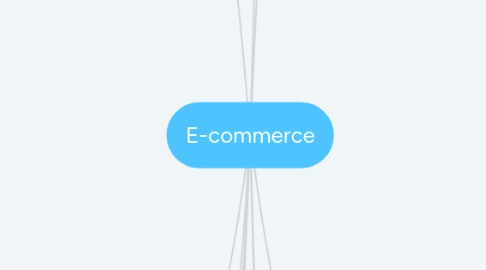
1. Payment & Delivery
1.1. Payment types
1.1.1. Credit cards
1.1.2. Mobile payments
1.1.2.1. IDeal
1.1.2.2. Bancontact
1.1.3. Bank transfers
1.1.4. E-wallets
1.1.4.1. Apple Pay
1.1.4.2. Google Pay
1.1.4.3. PayPal
1.1.5. Prepaid cards
1.1.6. Cryptocurrency
1.1.7. E-checks
1.1.8. Remittance system
1.2. Delivery types
1.2.1. Methods & Strategies
1.2.1.1. 2-day shipping
1.2.1.2. Same -day-delivery
1.2.1.3. Overnight shipping
1.2.1.4. Expedited shipping
1.2.1.5. International shipping
1.2.1.6. Freight shipping
1.2.2. Shipping carriers
1.2.2.1. USPS
1.2.2.2. DHL
1.2.2.3. UPS
1.2.2.4. PostNL
1.2.2.5. Homerr
1.2.2.6. FedEx
1.2.2.7. DHL Express
1.2.2.8. DPD
1.2.2.9. Red je pakketje
1.2.2.10. Buddee
1.2.2.11. Trunkrs
1.2.3. Shipping intigrations
1.2.3.1. Sendcloud
1.2.3.2. Shopify shipping
1.2.3.3. WooCommerce shipping
1.3. Security protocols
1.3.1. PCI DSS
1.3.2. TLS
1.3.3. SSL
1.3.4. MFA
1.3.5. 2FA
1.3.6. 2SV
1.3.7. DDOS
2. Platforms
2.1. WooCommerce
2.2. Shopify
2.3. Jouwweb
2.4. Magento
2.5. Lightspeed
2.6. Ecwid
2.7. Opencart
2.8. CCV SHOP
2.9. Prestashop
2.10. MijnWebWinkel
2.11. Wix
3. Types
3.1. Business-to-Business (B2B)
3.2. Business-to-Consumer (B2C)
3.3. Consumer-to-Business (C2B)
3.4. Consumer-to-Consumer (C2C)
3.5. Business-to-Administration (B2A)
3.6. Consumer-to-Administration (C2A)
3.7. Mobile Commerce (M-Commerce)
3.8. Facebook Commerce (F-Commerce)
4. Careers within E-commerce
4.1. E-commerce Marketing Co-ordinatior
4.2. Rich Content Developer
4.3. Web Designer
4.4. E-commerce Project Manager
4.5. C# Developer
5. Examples
5.1. Retail
5.2. Dropshipping
5.3. Digital products
5.4. Wholesale
5.5. Services
6. Introduction
6.1. What is E-commerce?
6.1.1. Buyers
6.1.2. Sellers
6.1.3. Producers
6.2. E-commerce Hype
6.2.1. Low prices
6.2.2. Tracking & Tracing
6.2.3. Shopping from home
6.2.4. High product variety
6.3. The term e-commerce was coined back in the 1960s, with the rise of electronic commerce – the buying and selling of goods through the transmission of data – which was made possible by the introduction of the electronic data interchange.
6.4. What is E-commerce?
6.4.1. Ecommerce, also known as electronic commerce or internet commerce, refers to the buying and selling of goods or services using the internet, and the transfer of money and data to execute these transactions. Ecommerce is often used to refer to the sale of physical products online, but it can also describe any kind of commercial transaction that is facilitated through the internet.
7. Marketplaces & Shopping websites (examples)
7.1. Amazon
7.2. Bol
7.3. Marktplaats
7.4. Ebay
7.5. VidaXL
7.6. Beslist.nl
7.7. Wish
7.8. VenD
7.9. Kleertjes.com
7.10. Otto
7.11. Kijkshop.nl
7.12. Homedeco
7.13. Fruugo
7.14. Fonq
7.15. Coolshop
7.16. Conrad
7.17. Blokker
7.18. Biedenwin.nl
8. Marketing
8.1. Pay-Per-Click adverrtising (PPC)
8.1.1. Google Ads Performance Grader
8.1.2. Google Ads Editor
8.1.3. AdEspresso
8.1.4. Bing Ads Editor
8.1.5. WordStream Advisor
8.2. Search Engine Optimization (SEO)
8.2.1. Varvy SEO Tool
8.2.2. Screaming Frog SEO Spider
8.2.3. Google's Mobile Friendly Test
8.2.4. PageSpeed Insights
8.2.5. KW Finder
8.3. Google Analytics
8.3.1. DataHawk
8.3.2. Screaming Frog
8.3.3. Campaign URL Builder
8.3.4. RegExr
8.3.5. Supermetrics
8.4. Search Engine Marketing (SEM)
8.4.1. SEMrush
8.4.2. Wordstream
8.4.3. Google Ads
8.4.4. Supermetrics
8.4.5. Optmyzr
8.5. Content marketing
8.5.1. Answerthepublic
8.5.2. Übersuggest
8.5.3. Keywordtool.io
8.5.4. HubSpot Blog Ideas
8.5.5. Yoast
8.6. Influencer marketing
8.6.1. Upfluence
8.6.2. Influence.co
8.6.3. HypeAuditor - Top Marketing Influencers Ranking
8.6.4. AspirelQ
8.6.5. Post for Rent
8.7. Social media marketing
8.7.1. Agorapulse
8.7.2. SocialOomph
8.7.3. Hootsuite
8.7.4. Buffer
8.7.5. Khoros
8.8. Email marketing
8.8.1. HubSpot Email Marketing
8.8.2. Sender
8.8.3. Sendinblue
8.8.4. Mailchimp
8.8.5. Klaviyo
8.9. Affiliate marketing
8.9.1. LeadDyno
8.9.2. Post Affiliate Pro
8.9.3. Voluum
8.9.4. Clickbooth
8.9.5. LinkTrust
8.10. Local marketing
8.10.1. BrightLocal
8.10.2. ThriveHive
8.10.3. ReachLocal
8.10.4. Grade.us
8.10.5. Momentfeed
8.11. Display advertising
8.11.1. Criteo Dynamic Retargeting
8.11.2. Basis
8.11.3. Adroll
8.11.4. Google Marketing Platform
8.11.5. Celtra
9. Benefits & Drawbacks
9.1. Advantages
9.1.1. A larger market
9.1.2. Customer insights through tracking and analytics
9.1.3. Fast respons to consumer trends and market demand
9.1.4. Lower costs
9.1.5. More opportunities to sell
9.2. Disadvantages
9.2.1. Lack of personal touch
9.2.2. Lack of tactical experience
9.2.3. Price and product comparison
9.2.4. Need for internet access
9.2.5. Credit card fraud
